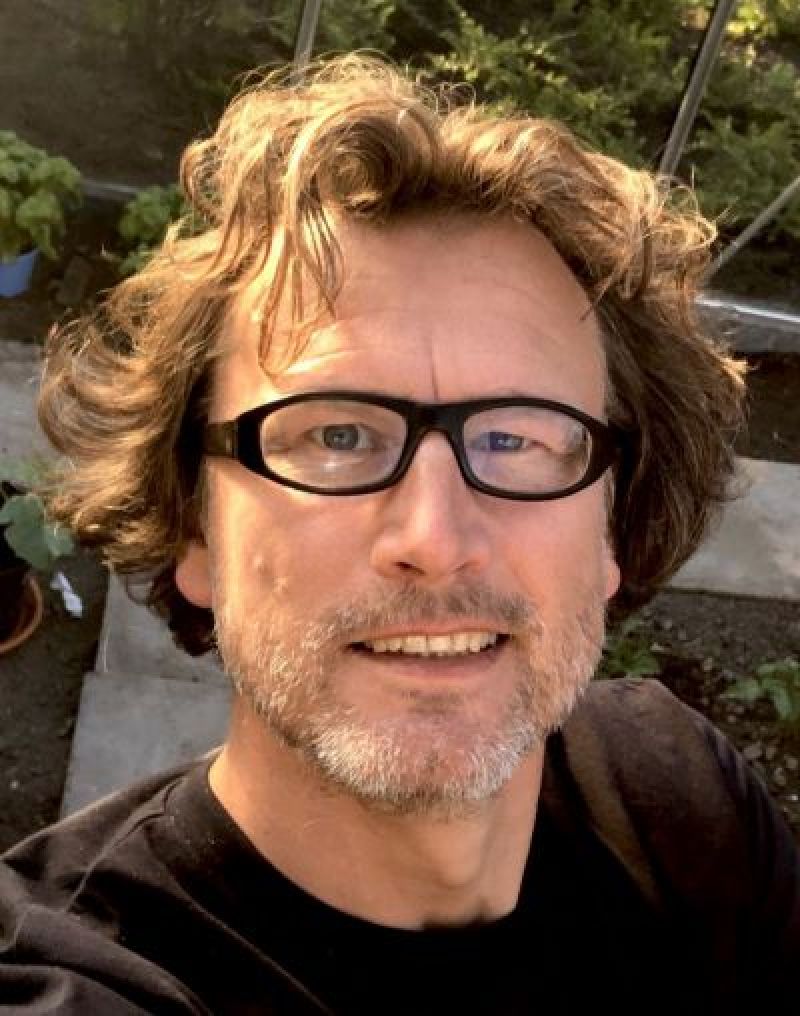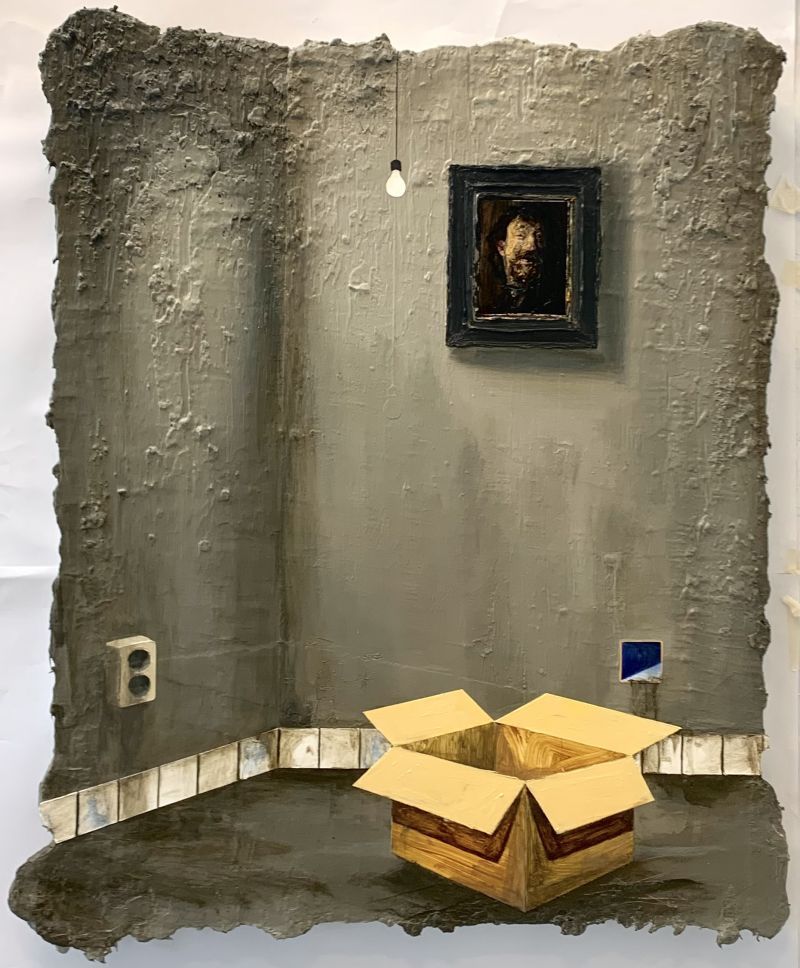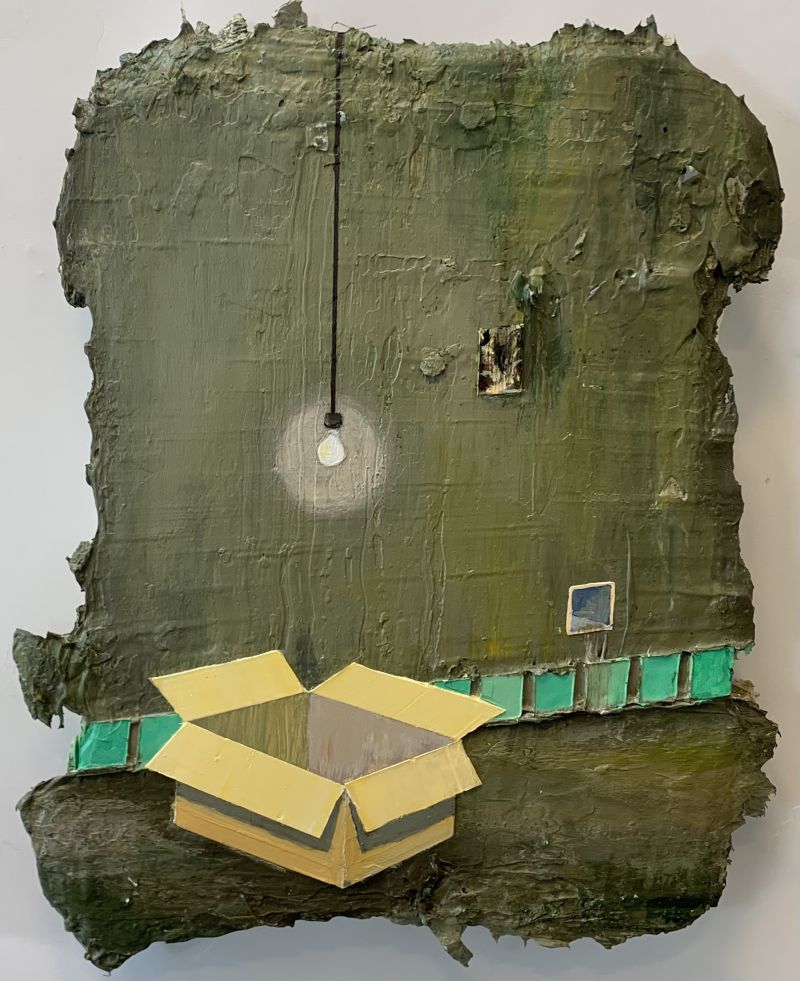Biography
Maurice Braspenning (1968) was born in Rotterdam, works and lives in Zoeterwoude. He was trained at the Rijksakademie van Beeldende Kunst and the Rietveld Academy, Amsterdam. His teachers at the Rijksakademie included Luc Tuymans, Lisa Milroy and Emo Verkerk. They motivated him to show his own world.

In Braspenning his recent development he shows interior spaces
Imaginary rooms, spaces, sinks. In the painting he shows what is not visible but what you become aware of when you look at it. Exposing that every boundary is the beginning of a new space. Just like every ending is a new beginning.
Making the interior spaces and their mutual relationships tangible gives the work a tension and a beauty that cannot be grasped immediately.They are thickly painted works with bold frayed edges of paint around the frame of the painting. He often works on used canvases that he ‘tightens’ with thick layers of paint for repainting. They show a love for matter and the complete appropriation of the frame and surface.
In my work over the last two years I am interested in the tension between objects and spaces. Over the last two years, my work has moved from outside to inside in terms of subject matter. During a trip to North Dakota in the winter, in a completely white landscape with no horizon, walking and driving over frozen lakes, I realized that there was a world going on beneath my feet. I could no longer let go of this fact back in the Netherlands. In every room I am in, I am aware that behind that wall or under my feet there is another room where something is going on.

The realization that every limitation is a new beginning.
This can also be felt at home, on a small scale. For example, when I look at the sink or at the corner of the room. The space in the sink looks like a theater. A tranquil image. The objects appear to be actors with a tension between them. The well is the transition to something else. A corner of the room turns out to be a setting of objects that evokes alienation because of how the objects relate to each other. That frozen theater sometimes seems to buzz with silence.

In my work I follow this path and apply it. By painting an open box I frame a space while at the same time it is the transition to another space, the room where it is located. A square blue hole in the wall makes you realize that there is a new space going on behind the wall, playing along in your imagination without being visible. In this way I try to enlarge and expand the place where the painting takes place, from the canvas to the viewer’s head.
During the working process, all kinds of associations emerge, from spaces I have been to, seen, the colors, the smell, the feeling. I grew up in an apartment on the 6th floor. That was paradise for me as a child. Spaces everywhere where you could do research. The elevator. The floors. But especially the cellar boxes at the bottom of the apartment. We were able to enter some boxes with a runner. A great adventure. There was a smell of gasoline and oil in our own cellar box. My father, who had a passion for collecting, had all kinds of jars, boxes, boxes, rusted nails and all kinds of things and materials there. There was also his moped, a RAP, with a stockfish engine, under a thick cloth. It had a beautiful pale blue and green-gray color. I sometimes started it secretly, after which the entire cellar box was blue.
When I went to visit my aunt and uncle, who also lived in an apartment, my uncle always took me to his basement box, his domain. He always had something for me there that had ‘fallen off the truck’. There were plastic 7-up bottles in the corner, which I wasn’t allowed to drink from. Only later did I understand that it contained gin.
The self-built wooden fishhouses in North Dakota, with holes in the floor, where guests fish with short rods at night, drink beer and have a BBQ. A world above the ice and a world below.
I feel the carpet of the outdated rooms in an empty house of a cousin in Scotland, the smell of damp and mold. The bare rooms that smelled of wet plaster and rotting wood, where I stayed as a plasterer with sticky clothes. To earn some extra money as a starting painter. A bulb on the ceiling that had a piece of plastic covered with tape, otherwise you would become electrified while breaking it. These kinds of images go through my head when I’m working.
